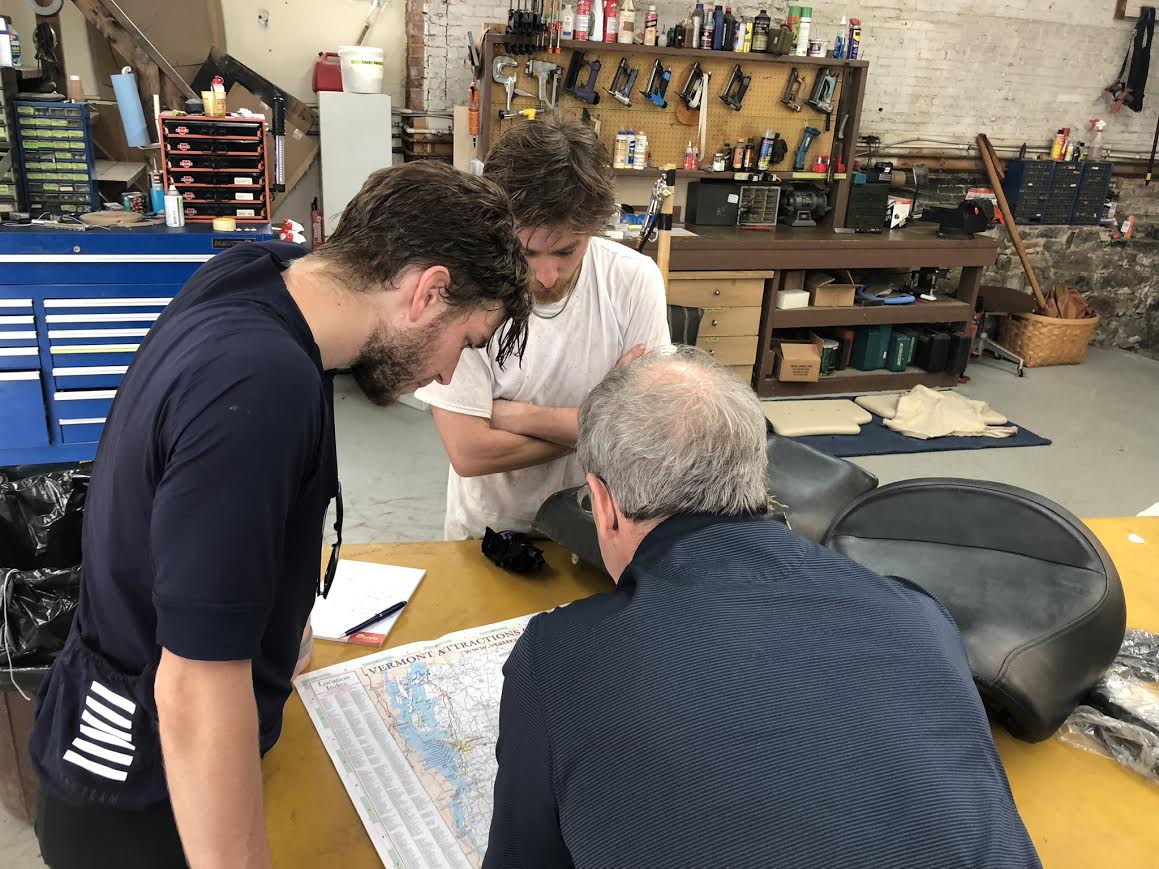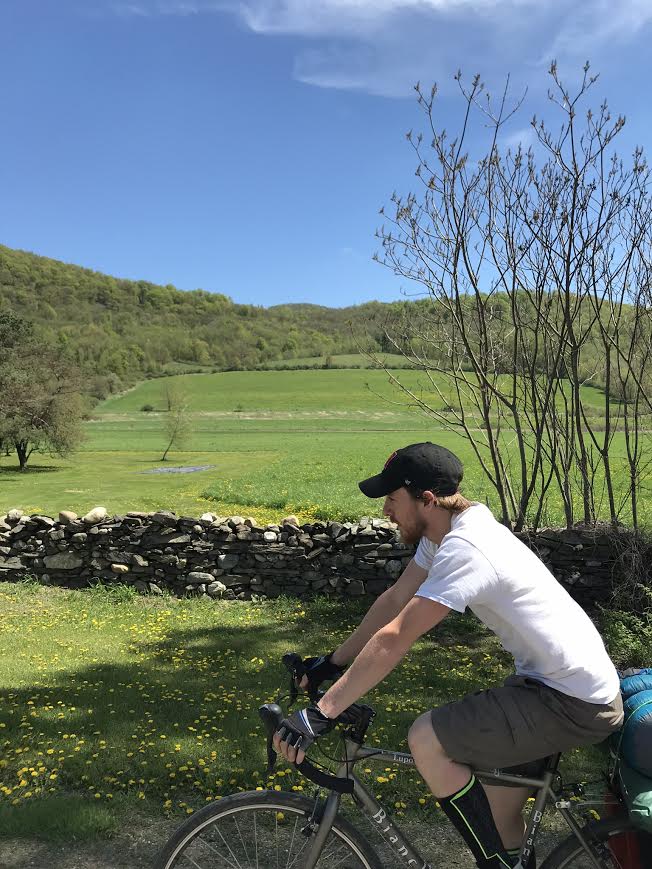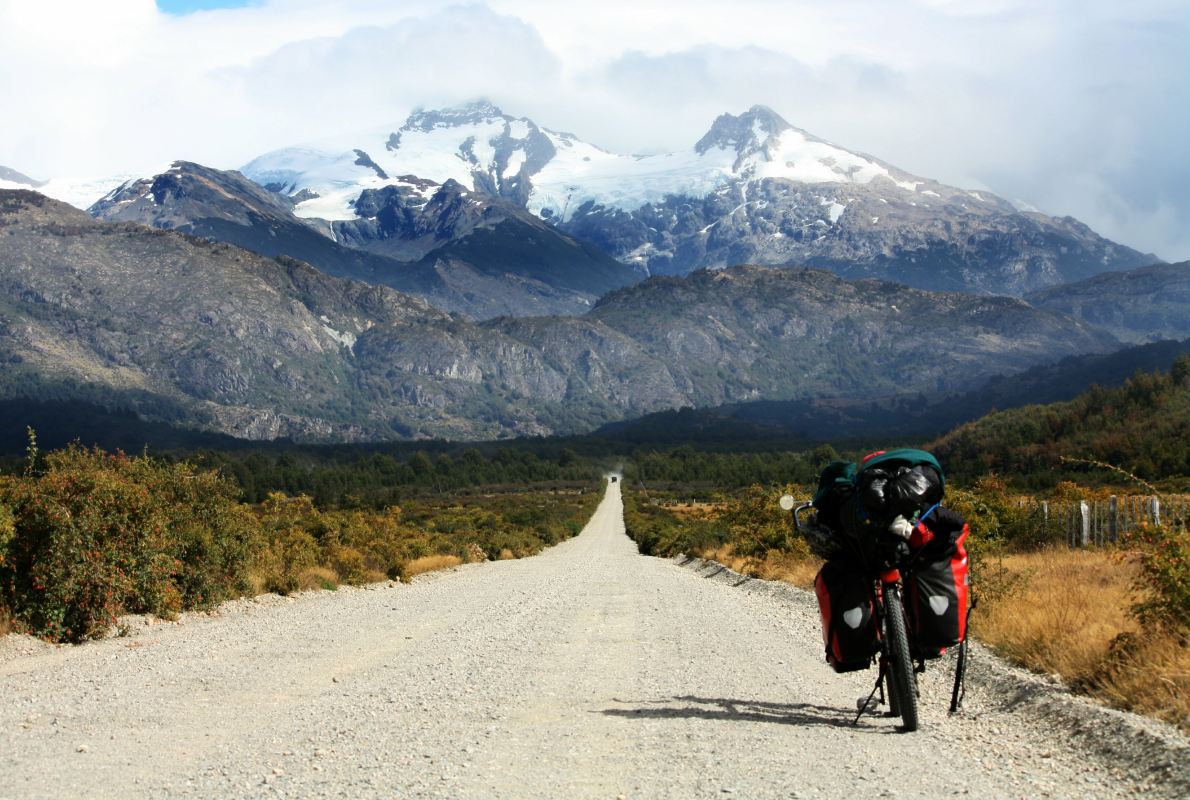“Do you have a map?” asked Jim.
I unfolded a lightly worn map of New England. I bought the map for my first bike tour, a 400-mile trek from New York to Canada by way of Vermont. Traveling by bike, we were nimble enough to experience both cultural landmarks and natural environments. We moved at a steady clip: fast enough to never be bored and slow enough to admire the full, green pastures, lichen-laced cemeteries, and small town Americana. Nourished by diners and delis and Stewart’s convenience store, we covered 60 to 70 miles most days and spent five to six hours in the saddle.
I consult the map even now, more than a year later. Our route, penned in black ink, was a patchwork of rail-to-trails, scenic highways, dirt roads and wrong turns. Each morning, we pored over the map and charted the day’s course, or what we thought might be our course.
We were only halfway to Canada when we met Jim Ortuno, an avid cyclist and owner of Shoreham Upholstery. That morning, we biked a tightrope on the edge of a busy Vermont highway until heavy rain and 18-wheelers bullied us off. In search of refuge, we tried a tavern, but it was closed. Next door, there was an open garage, and standing inside was Ortuno, who cleaned his hands with a rag and waved us over.
Our map was not detailed enough for Ortuno, so he retrieved a local map of Addison County. This, too, was not detailed enough for the route Ortuno had in mind. Using Google Maps to jog his memory, Ortuno drew us a map of country dirt roads where he promised we would be unbothered. He starred certain checkpoints: The Halfway House, a diner with excellent shepherd’s pie, the recycling center that doubled as a vista point to admire Lake Champlain spread before the Adirondack Mountains, and a secluded campground near the lake where we could sleep.
The Rise of Bike Touring
Ortuno knew what he was doing, more so than us. For the past 20 years, he had led bike tours in Vermont and around the country for Discovery Bicycle Tours. In a phone conversation after our tour, Ortuno told me this year alone he led tours in Texas, Idaho, Mississippi, Pennsylvania and the Hudson Valley. These tours, popular among people aged 40 and older, are fully supported, meaning the logistics of lodging, food, water, etc. are all taken care of by Ortuno and another tour leader.
He credited E-bikes for this strong resurgence in bike touring among older populations.
“Millennials don’t need us as much,” Ortuno tells me. “They like to be on their own.” This was true of our party. After weeks of preparation — researching a route, assembling gear, one long ride of 70 miles — we were halfway through our first bike tour. Rather than pay for lodging, we opted to camp and rigged our bikes to carry everything we might need to camp, cook and perform routine bike maintenance and emergency repairs.
When asked what motivates people to go on bike tours, Ortuno doesn’t hesitate: “Adventure.”

The market for outdoor adventure is bullish. Once considered niche, bike touring has flourished in recent years. Dozens of new companies specializing in bike bags and other products designed for touring, have rushed to court this burgeoning market.
“In 2006, nobody was talking about bike touring,” says Martina Brimmer, co-founder of Swift Industries, a bicycle bag company based in Seattle. Founded in 2008, Brimmer acknowledges she was at “the front of a wave.” According to Brimmer, “Swift has grown at a two-fold rate for the last seven years.”
At the same time, long-standing companies are changing their business model to capitalize on adventure cycling. Joe Nocella, the owner of 718 Cyclery in Brooklyn, is doubling down on “outdoor experiences, on and off the bike,” by offering “more trips, more classes, more workshops, more gear rental.”
State tourism agencies recognized the economic potential of bike touring and have invested in improving infrastructure. Many of these projects will stitch together pre-existing, discreet trails into one seamless multi-use trail. The Great American Rail-Trail, which stretches over 3700 miles between Washington state and Washington, D.C., is over halfway complete. In New York, the Empire State Trail is scheduled for completion by the end of 2020. Once complete, the route, 750 miles between New York City, Buffalo and Canada, will be the longest state trail in the nation.
Warmshowers, a community forum similar to Couchsurfing, but designed specifically for cyclists to host one another for a night while on tour, has experienced exponential growth in membership between 2007-2017. In 2007, 554 members joined and in 2017, 29,723 members joined.
Getting Started
One does not need to be a serious cyclist to experience a taste of bike touring. Overnight trips are an excellent introduction to touring that do not require elaborate gear nor significant training.
For those living in New York, 718 Cyclery hosts monthly “micro tours” (leave Saturday, come back Sunday), which are designed to “lower the barriers for entry.” The most popular micro tour, according to Nocella, is a 44-mile jaunt, mostly flat and on protected bike lanes, to Croton Point Park. After camping along the Hudson River, there is the option to return to the city via Metro North or bike. A primer with a packing list and other resources is available on their website.
Touring culture is full of gearheads, and for the casual cyclist, it can quickly become overwhelming when deliberating how to best rig your bike, gear to buy, and so on. Before taking the plunge, “Start off with a backpack and just do an overnight,” advised Brimmer. “If it hooks you, then start investing.”

It is always best to travel as light as possible. One quickly learns to shed any extra weight. And I guarantee you will need less than you think, especially for just an overnighter. Depending on whether you camp and cook, the packing list can be rather minimal. Let’s assume you camp and eat out. A packing list for an overnighter might include camping gear (tent, sleeping pad/bag, headlamp), tools for bike maintenance and repair (an extra tube, tire pump, patch kit, and multitool), hygiene and personal items.
Ortuno advised first-timers to be prepared for inclement weather and “put in saddle time.” “The most miserable people,” said Ortuno, “are those who don’t have the right kind of clothes.” Bicycle shorts, padded for comfort, are a worthy investment.
If you regularly bike, do at least one long ride (40 to 60 miles) beforehand, loaded with gear, to acclimate to the extra weight and test your ability, then plan accordingly. For those fresh to biking, go for an hour-long ride a few times a week and work up to longer distances.
The pleasures of bike touring are many, but the greatest pleasure, as noted by Brimmer, might be a sense of “autonomy and feeling so capable.” It is incredibly empowering to propel yourself across county lines and country borders, to carry everything you need, to live with grit. It is a hard-won pleasure, no doubt, but never have I come closer to a feeling of adventure.
The Charge will help you move better, think clearer and stay in the game longer. Subscribe to our wellness newsletter today.

























